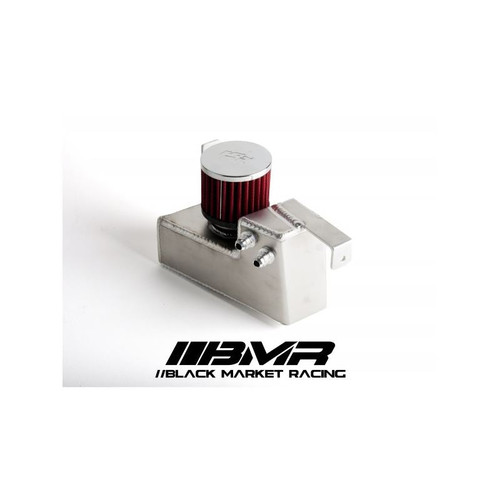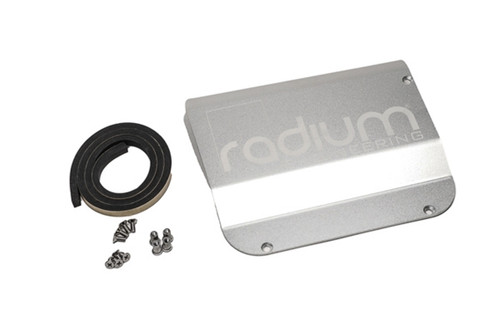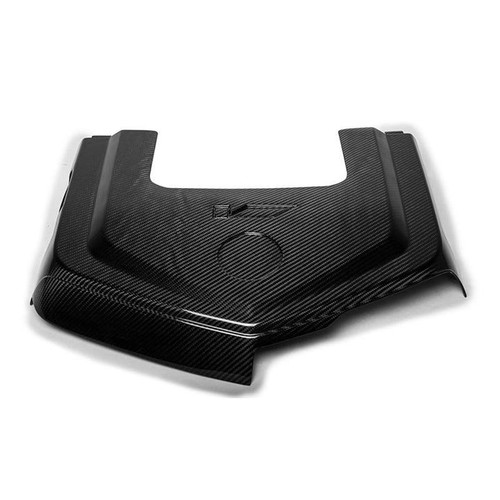Product Description
Radium Engineering - Catch Can Kit - 09-15 CTS-V - LSA
Click here to download installation instructions (PDF)
Radium Engineering catch cans feature large 10AN ORB ports, a 4AN ORB drain port, 2-step oil separation baffling, and an O-ring sealed dipstick. These kits mount using factory holes and integrate perfectly with the surrounding components. They do NOT vent to atmosphere (VTA), thus are emissions and track legal. Closed loop systems remove the oil and sludge from the PCV gasses before it is routed to the engine to be burned. A closed loop system also promotes negative crankcase pressure for optimal performance. Furthermore, closed systems prevent unwanted oil vapors from entering the cabin. The dipsticks built into the catch cans allow easy inspection of accumulated fluid. No cutting, drilling or permanent modifications are required. For more information on Radium catch cans, CLICK HERE.
20-0562 CATCH CAN KIT, PCV, CADILLAC CTS-V
Starting in 2004 with the Gen IV LS engines, General Motors replaced the PCV valve with a 2.5mm fixed orifice. This move was, presumably, to save production costs and eliminate a serviceable part. NOTE: A PCV valve serves a few purposes in the crankcase; promote negative pressure and prevent boost pressure. Also, in the event of a backfire, the PCV valve prevents combustible vapors from igniting in the crankcase.
The Radium Engineering PCV catch can kit improves the performance of the LSA crankcase ventilation system. The catch can runs inline between the PCV valve and the intake manifold. The included bracket (below) replaces the OEM intercooler coolant filler bracket and mounts the catch can. 
When the intake manifold pressure is close to or greater than atmospheric pressure, the PCV "check" valve closes and, thus, this hose experiences no flow. Conversely, the PCV hoses will experience "metered" vacuum when the engine is idling, steady state cruising, and decelerating. This would normally draw unwanted crankcase vapor, unspent fuel, and oil sludge into the intake manifold immediately after a high load run. 
Because the OEM 2.5mm orifice port is restrictive, a replacement baffled oil cap (above) is included to draw as much blowby from the crankcase as possible.
INCLUDES
-Baffled oil catch can
-Baffled oil cap replacement
-O-ring sealed aluminum PCV valve
-CTS-V specific mounting bracket
-AN adapter fittings and hose ends
-Stainless steel hardware
-Radium PCV hose
NOTES:
1. The PCV catch can kit is compatible and recommended to be used with the CCV catch can kit. See 20-0563 below.
2. No extra inline check valve is required since Radium catch cans are pressure sealed.
20-0563 CATCH CAN KIT, CCV, CADILLAC CTS-V
The CCV catch can mounts to 3 OEM threaded bosses at the rear of the supercharger housing (shown below).
To retain factory functionality, the CCV catch can runs inline between the crankcase vent (CCV) ports and the intake pipe. 
At low loads, this catch can experiences atmospheric pressure. However, when the engine is at high load (WOT), these vents will experience high flow out of the crankcase. This would normally lead to oil and sludge accumulation in the air filter intake pipe. Oil accumulation will occur in the intercooler which lowers the thermal efficiency properties of the heat exchanger and leads to decreased performance.
INCLUDES
-Baffled oil catch can
-LSA specific mounting bracket
-AN adapter fittings and hose ends
-Stainless steel hardware
-Radium PCV hose
NOTES:
1. The CCV catch can kit does NOT address blow-by from the PCV valve side of the crankcase.
2. The CCV catch can kit is compatible and recommended to be used with the PCV catch can kit. See 20-0562 above.
20-0564 DUAL CATCH CAN KIT, CADILLAC CTS-V
For the ultimate in engine protection, Radium recommends 20-0564 Dual Catch Can Kit, Cadillac CTS-V. 
This kit utilizes both the "PCV" and single "CCV" catch can kits detailed above.
OPTIONAL
20-0024 PETCOCK DRAIN KIT
-4AN ORB to barb fitting
-Nylon 1/4" barb ball valve
-Radium PCV Hose
This kit can be used to remotely drain the catch cans without the need to unscrew the canister body.















